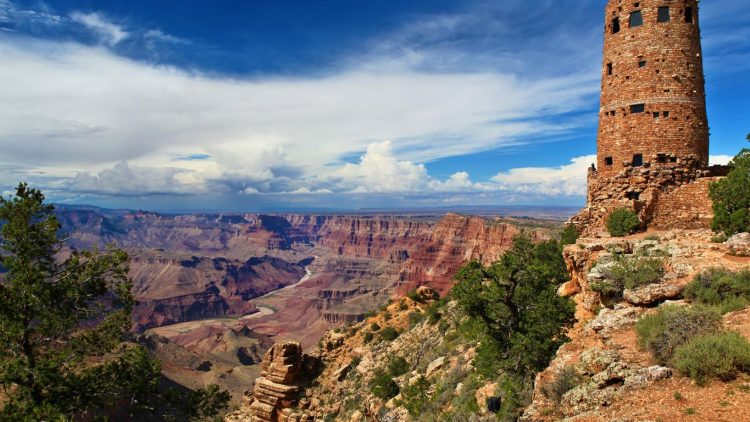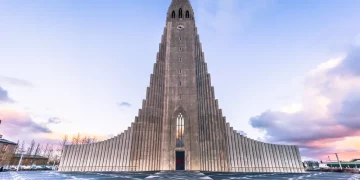Introduction
The Grand Canyon National Park is one of the world’s most iconic natural wonders. Carved by the Colorado River over millions of years, the canyon stretches 277 miles in length, reaches depths of over 6,000 feet, and spans up to 18 miles in width. Whether you are an adventure seeker, a nature lover, or a history enthusiast, the Grand Canyon has something to offer. This comprehensive travel guide will provide everything you need to know about visiting this awe-inspiring destination.
1. What Makes the Grand Canyon National Park So Unique?
1.1 Geological Significance
The Grand Canyon is a living geological laboratory, offering visitors a glimpse into Earth’s history. The rock layers exposed in the canyon walls represent nearly two billion years of Earth’s evolution. The striking colors and unique formations provide insight into geological processes such as erosion, sedimentation, and tectonic movement.
1.2 Ecological Diversity
Despite its arid environment, the Grand Canyon is home to a diverse range of ecosystems. From the lush riparian habitats along the Colorado River to the dry desert environments on the canyon’s rims, the park supports a variety of plant and animal species. The flora and fauna you can encounter are as diverse as the landscape itself.
1.3 Cultural Heritage
The Grand Canyon has been home to various Native American tribes for thousands of years, including the Hopi, Havasupai, and Zuni. Today, the canyon remains a sacred place for many indigenous cultures. In addition to its Native American history, the Grand Canyon also holds historical significance as a site of European exploration and early American expansion.
2. How to Get to the Grand Canyon National Park
2.1 By Car
The Grand Canyon is easily accessible by car from several major cities. Whether you are coming from Phoenix, Las Vegas, or Flagstaff, the journey offers scenic views as you approach one of the most spectacular landscapes in the world.
- South Rim: The South Rim is the most accessible and most visited part of the park. It’s just a 1.5-hour drive from Flagstaff and can be reached from Phoenix via a 3.5-hour drive.
- North Rim: The North Rim is more remote and less visited. It is located about 215 miles from the South Rim and takes longer to reach, but it offers a quieter experience with a more rugged atmosphere.
2.2 By Air
The closest major airport to the Grand Canyon is Flagstaff Pulliam Airport (FLG), around 90 minutes from the South Rim. Alternatively, Phoenix Sky Harbor International Airport (PHX) is 3.5 hours away by car and offers a broader range of flights.
For those looking to experience the canyon from the sky, several companies offer scenic helicopter and small aircraft tours that depart from Grand Canyon Airport in Tusayan.
2.3 Shuttle Services
Once you arrive at the park, free shuttle buses operate on the South Rim, allowing you to explore the park’s viewpoints, hiking trails, and visitor centers without worrying about parking. The Grand Canyon Railway, which departs from Williams, Arizona, offers a nostalgic trip to the South Rim and is a fun way to experience the park.
3. When is the Best Time to Visit the Grand Canyon?
3.1 Spring (March to May)
Spring is an ideal time to visit the Grand Canyon, with pleasant temperatures and fewer crowds than in summer. The spring wildflowers bloom, creating vibrant colors amidst the canyon’s rocky backdrop. Spring is also when most park services open up after winter.
3.2 Summer (June to August)
Summer brings warmer weather, with temperatures often exceeding 100°F at the canyon floor. The South Rim sees the largest number of visitors during these months, making it the busiest time to visit. However, summer is also when all activities are in full swing, including rafting, hiking, and sightseeing.
3.3 Fall (September to November)
The fall season offers mild temperatures, fewer crowds, and the stunning changing colors of fall foliage along the canyon rim. The weather remains comfortable for outdoor activities, and the fall months are considered one of the best times to visit the park.
3.4 Winter (December to February)
Winter at the Grand Canyon is a peaceful and serene time to visit. Snow on the canyon’s rims provides a picturesque scene, and fewer visitors mean quieter trails. However, be prepared for cold weather, especially on the rim, and check weather conditions before venturing into the canyon.

4. What Are the Must-See Attractions and Activities at the Grand Canyon?
4.1 Scenic Viewpoints
The Grand Canyon is famous for its spectacular viewpoints that offer dramatic vistas of the canyon’s immense size and beauty.
- South Rim: The most visited viewpoint is Mather Point, which offers panoramic views of the canyon. Other popular viewpoints include Yaki Point, Hopi Point, and Desert View, all offering unique perspectives of the canyon.
- North Rim: The North Rim offers a more remote experience with scenic viewpoints like Cape Royal, Bright Angel Point, and Point Imperial. The North Rim is less crowded and is perfect for visitors seeking solitude.
4.2 Hiking Trails
The Grand Canyon boasts a network of trails for all skill levels. From easy rim walks to challenging descents into the canyon, there’s a trail for everyone.
- Bright Angel Trail: One of the most popular trails, this 9.5-mile descent takes you from the South Rim to the Colorado River. It’s well-maintained and offers spectacular views along the way.
- South Kaibab Trail: This trail offers incredible views, but it is steeper than the Bright Angel Trail, making it more challenging. It is a great trail for those wanting to see the inner depths of the canyon in a shorter amount of time.
- Rim-to-Rim Hike: For the ultimate hiking experience, the Rim-to-Rim hike traverses the canyon from the North Rim to the South Rim, covering 21 miles. It is an extremely challenging hike and is typically done over two days.
4.3 River Rafting
One of the most exciting ways to experience the Grand Canyon is by rafting down the Colorado River. Various rafting trips are available, ranging from half-day excursions to multi-day adventures. These trips allow you to explore the canyon from its base and experience the rapids along the way.
4.4 Helicopter Tours
For a truly unique experience, helicopter tours offer an unparalleled bird’s-eye view of the Grand Canyon. These tours give visitors a chance to see the canyon’s immense size and geological features from the air.
4.5 Desert View Watchtower
Located at the eastern edge of the South Rim, Desert View Watchtower is a historic structure designed by architect Mary Colter. The tower offers stunning views of the canyon and provides an excellent spot for photography.
5. What Are Some Essential Tips for Visiting the Grand Canyon?
5.1 Stay Hydrated and Prepared
The Grand Canyon’s altitude and arid climate can make hiking strenuous, especially in the summer heat. Always bring plenty of water and snacks for your hikes, and be mindful of the weather conditions. High temperatures can be especially dangerous in the canyon’s interior.
5.2 Plan Ahead
Due to the Grand Canyon’s popularity, it’s essential to plan your visit in advance, especially during the busy summer months. Accommodations, tours, and activities can fill up quickly, so make reservations as early as possible.
5.3 Accommodations
There are several options for staying at the Grand Canyon, from camping sites and cabins to hotels and lodges. The South Rim offers a wider range of accommodations, including the historic El Tovar Hotel, while the North Rim has fewer but more secluded options.
5.4 Be Aware of Safety
Safety is key when visiting the Grand Canyon. Always follow posted guidelines, stay on marked trails, and know your limits. The canyon’s sheer size and elevation can be disorienting, so it’s important to stay aware of your surroundings.
6. What Are the Best Dining Options at the Grand Canyon?
While the Grand Canyon is a remote location, it offers a variety of dining options to suit every budget and taste.
- El Tovar Dining Room: Known for its historic charm and fine dining, this restaurant offers a mix of American and Southwestern cuisine.
- Bright Angel Lodge: Serving more casual fare, Bright Angel Lodge’s restaurant offers burgers, sandwiches, and salads, perfect for refueling after a hike.
- South Rim Cafeterias: For quick and affordable options, the South Rim has a few cafeteria-style eateries offering snacks, sandwiches, and beverages.
7. Conclusion: Why Is the Grand Canyon National Park Worth the Visit?
The Grand Canyon is a testament to the power of nature, a place where millions of years of history and breathtaking beauty converge. Whether you’re hiking to the canyon’s depths, rafting along the Colorado River, or simply soaking in the views, the Grand Canyon offers experiences that will stay with you for a lifetime. With careful planning and a sense of adventure, a trip to the Grand Canyon National Park is sure to be a highlight of your travel journey.





















